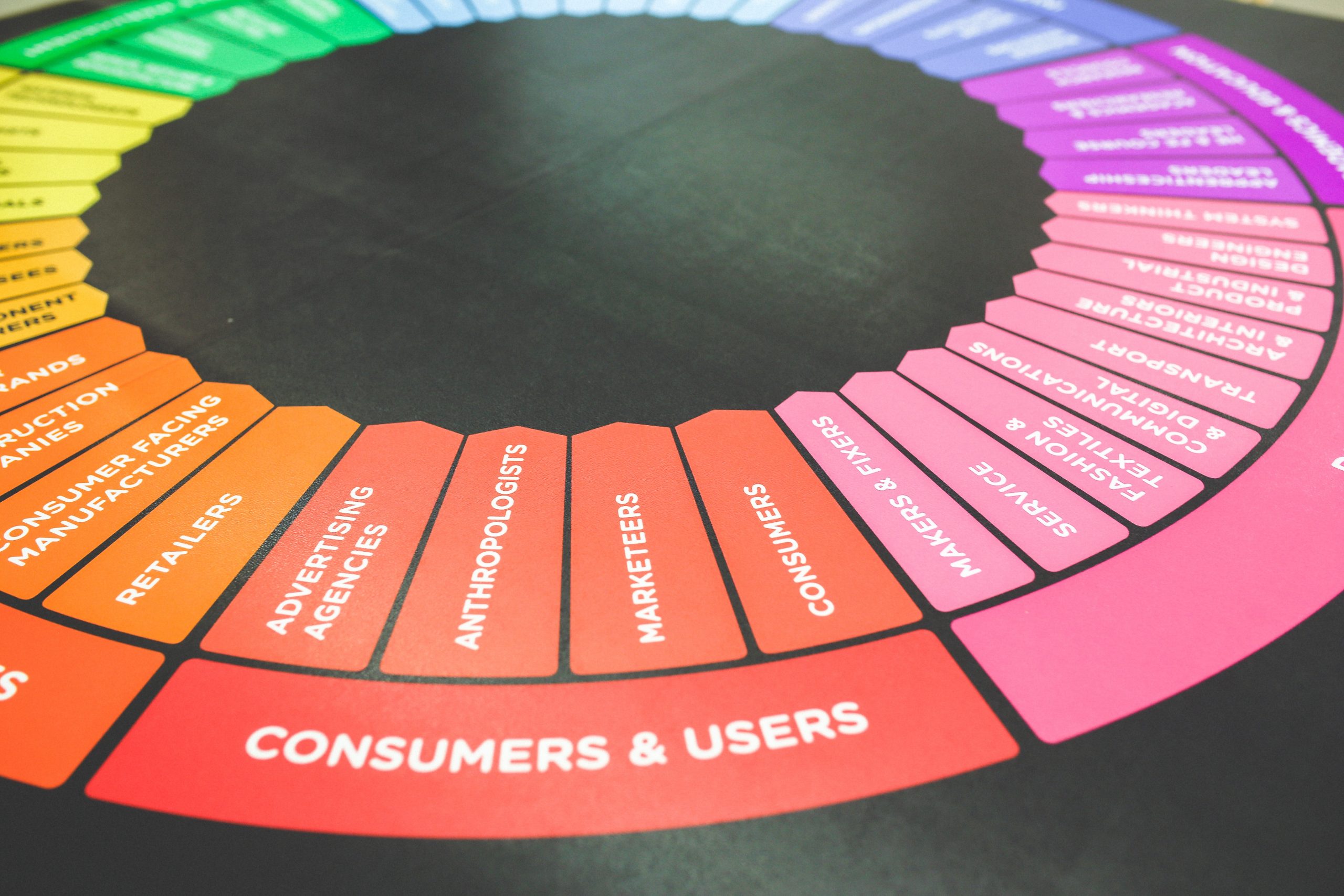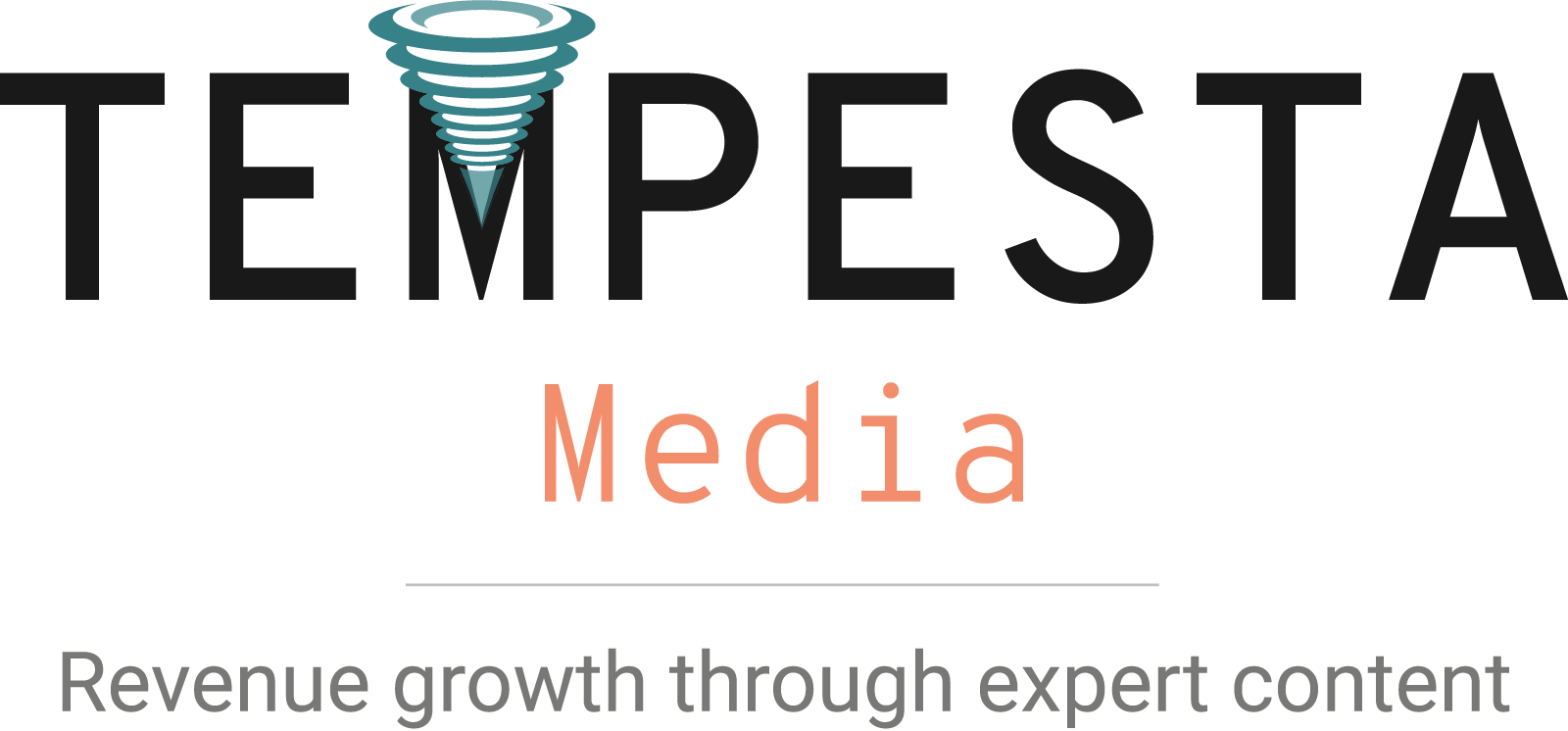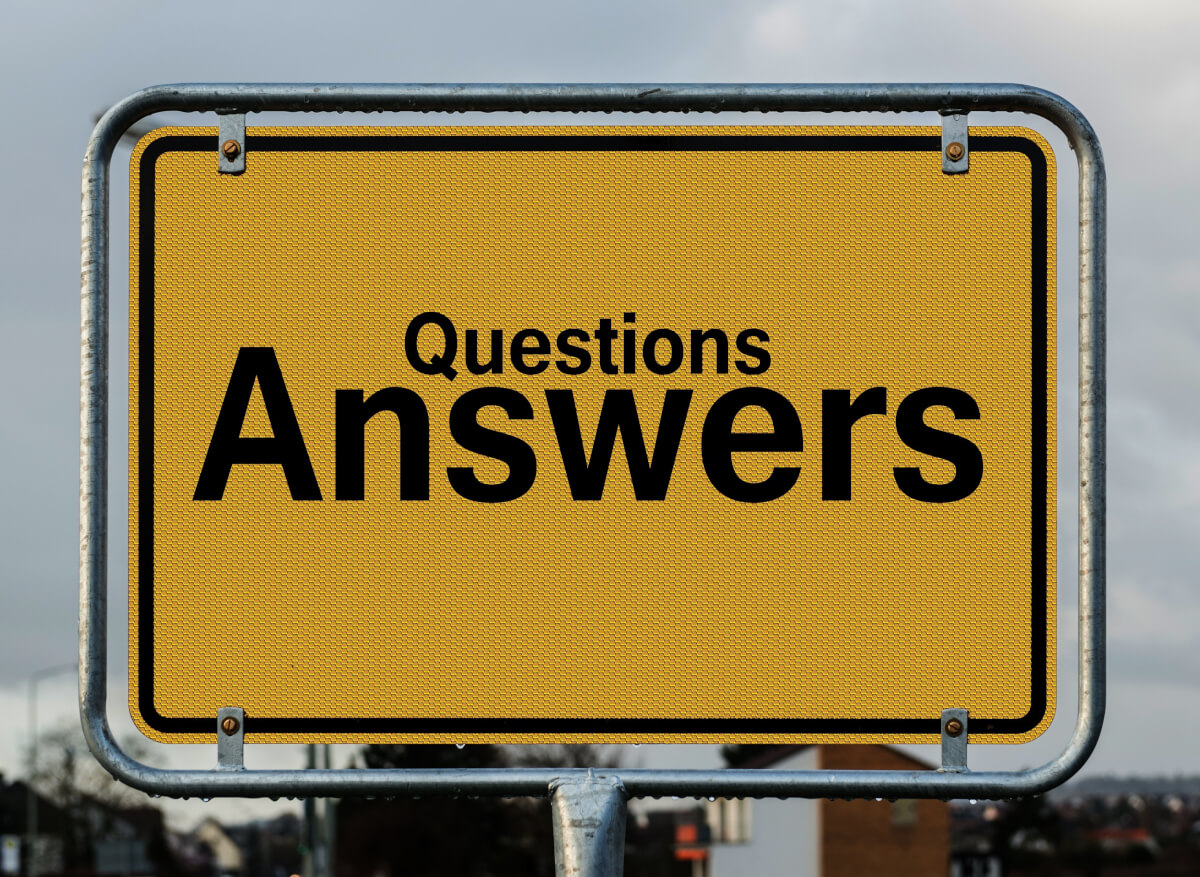Intent data and micro-target segmentation can drive actionable results for your content marketing ROI
CIO Magazine recently put out an article about the use of intent data on content marketing. While the article does a good job of introducing the concept of intent data for content marketing ROI, in my opinion, I don’t think the article went far enough in providing actionable insights for CMOs and heads of content marketing.
Unlike even two years ago, content marketing has become much more saturated.
Nearly every business is, at least, attempting to implement some form of content marketing. Most start with regularly posting to their blog. As they begin to see initial results, the next question that comes into their minds is, “OK, now how do I get even more and better results?”.
A knee-jerk reaction may be to increase blog posting frequency. While this is likely to generate some scale, it is not the most efficient and ROI-maximizing approach available.
This is why I was excited to see the CIO Magazine’s article on applying intent data to content marketing programs. I have always believed that if you get the right message, to the right audience, at the right time, marketing magic can happen. Intent data can do a great job of defining the right audience.
Here are some techniques most B2B businesses can use to gather some intent data from their Google Analytics accounts.
Adding custom segments
Google provides a robust audience segmentation tool that allows user to tightly define an audience. You can choose from a myriad of segmentation options including: demographic, behavioral, visitor origination location and much more.
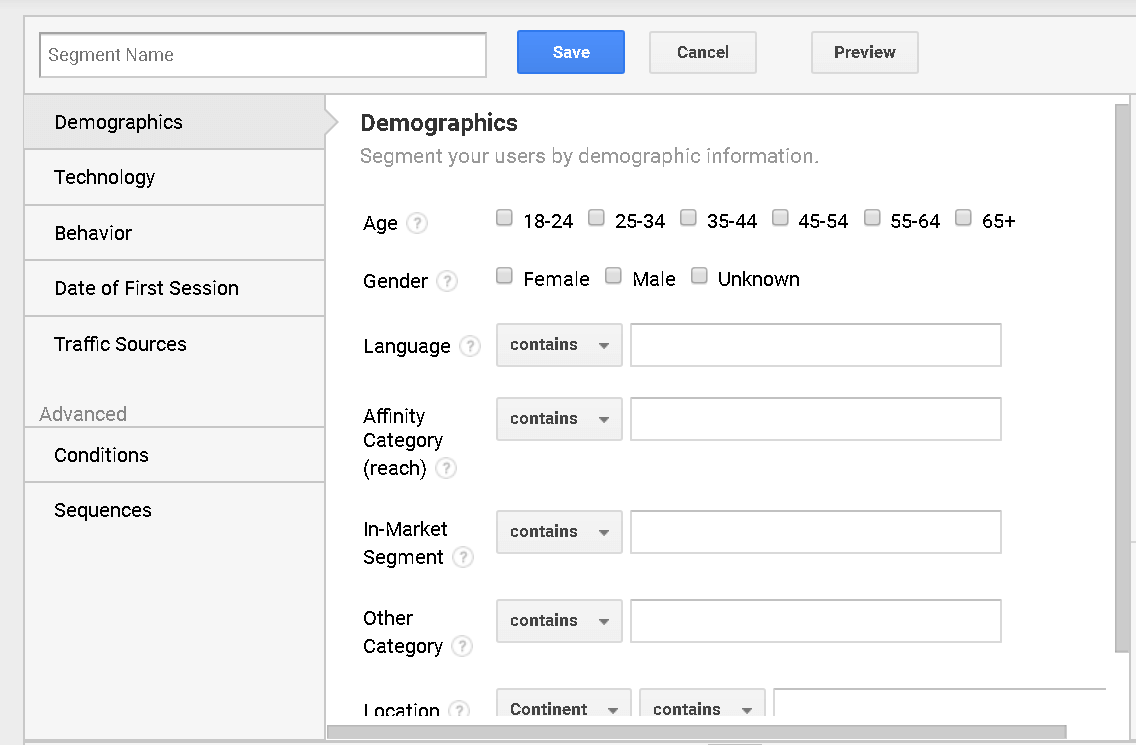
Patterns before custom segments
While many companies have a pretty good understanding of their main target audience, what most don’t have a firm grasp of are the micro-target audiences, which lie hidden within the main target audience. It is these micro-target audiences that you need to identify and observe.
This is where custom segmentation, within Google Analytics, comes into play. For example, let’s say that my main target audience consists of females, between the ages of 25 and 45, residing in the United States, and who frequently eat dinner out of the home.
If I had entered all those data inputs first and created by custom segment, it would be difficult for me to uncover those potential micro-targets. Instead, I should identify patterns using my conversion goals. Here’s how:
- Login to your Google Analytics account and select “Conversions”. Create a segment that just contains all “sessions with conversions”. Don’t add anything else to this segment.
- Go to “Behavior” and click on “Behavior Flow”.
- Highlight behavior flow by selecting your segment called “sessions with conversions”. Now, you will be able to see how your converters entered your website and the path they took to ultimately converting.
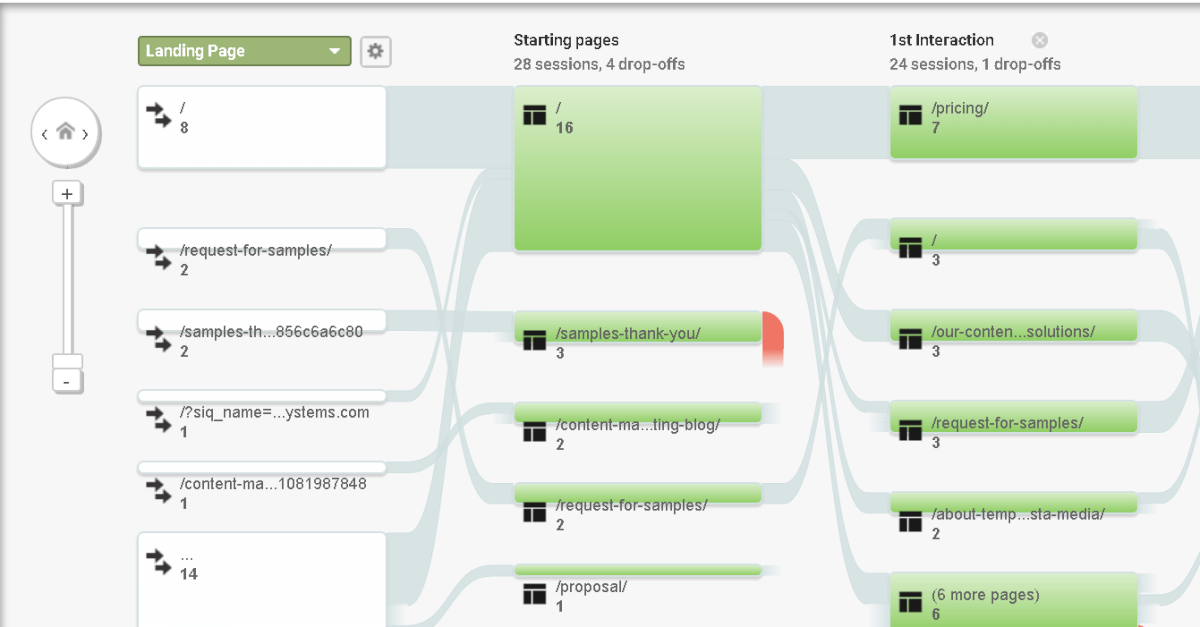
This information can be used to determine what the converter’s intent was before they raised their hand and converted. In the screenshot above, clearly the audience was interested in better understanding the company’s solution and wanted to receive samples.
As a marketer, I would want to use the information gleaned from this report and focus my A/B testing not on the landing pages that users are initially directed to, but to the samples and solutions pages. It’s those that have arrived here have moved from the awareness stage to the interest stage of the purchase funnel, but have not yet taken action (conversion).
These are the people we want to focus on converting. It’s also at this stage that actions you take can have a major impact on your bottom funnel conversion rates, without spending another dollar on media.
For content marketing purposes, we want to better understand these two pages and understand where those who abandoned here went. Where they immediately went will help inform us on what deficiencies these pages have and what additional content and content marketing education we need to do to them.
Where micro-targets emerge
While the information that we have uncovered so far has strong value, in and of itself, what we’re after is micro-target audiences AND their intent.
We still have not broken down our converters further into micro-target audiences. To do so, start by segmenting by the visitor’s source. You can do that by clicking on the drop-down menu located in the top left-hand corner of your Behavior Flow.
Select either “Source” or “Source/Medium”. Then, pick a source that you are interested in exploring further and highlight all traffic through that source. Doing so will quickly help you identify which audiences are coming by source.
In the example below, I highlighted traffic that originated from Google. Here, we can see that an interesting trend emerges. Visitors who originated from Google were lower in the purchase decision funnel than other visitors. This is apparent by seeing the high proportion of visitors, who went straight to the pricing page.
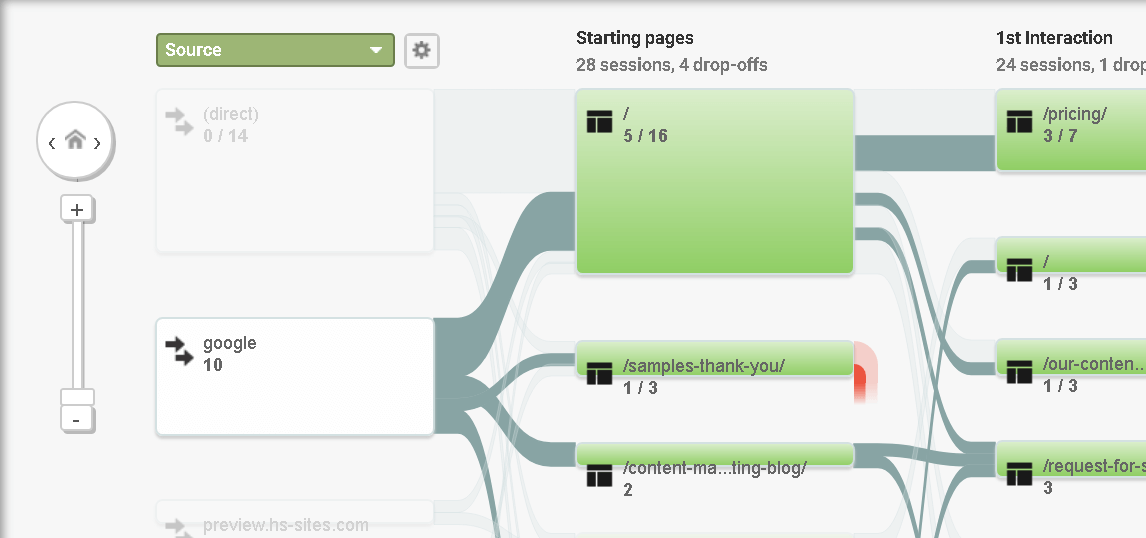
Intent data + micro-target segmentation = content marketing success
Clearly, the messaging and/or medium used are driving prospective lower funnel visitors. This is important because we have not only identified a micro-target audience, but we have determined intent. You are now halfway to winning the conversion battle!
Having intent data at the micro-target audience level now gives you actionable data that you can implement in both your content marketing and demand generation programs.
Sources
CIO Review: https://www.cioreview.com/news/significance-of-intent-data-in-content-marketing-nid-27947-cid-51.html
Google Analytics: https://analytics.google.com/analytics/web/
